
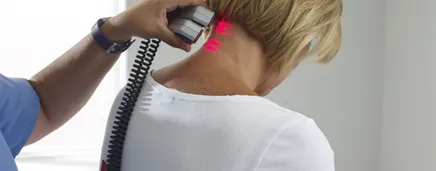
WHAT IS COLD LASER THERAPY?
Cold Laser Therapy, often known as Low-Level Laser Therapy (LLT), is a well-researched therapeutic modality that utilizes light to generate cellular energy, reduce inflammation, and promote rapid healing. This occurs through a process called photobiomodulation (PBM), which will be described in detail later in this article.
Cold Laser Therapy, or LLLT, began as a medical treatment in 1967, originally used for pain relief and wound healing. As researchers and clinicians observed the anti-inflammatory and regenerative properties of low-level laser therapy, the medical applications of LLLT have broadened to include conditions such as stroke, myocardial infarction, and degenerative or traumatic brain disorders.
Many of the most compelling applications of LLLT are in the field of neurology (both central and peripheral). Many serious brain diseases and injuries can be successfully treated with noninvasive transcranial laser therapy. Furthermore, in the peripheral nervous system, LLLT can be used effectively for nerve regeneration and pain relief.
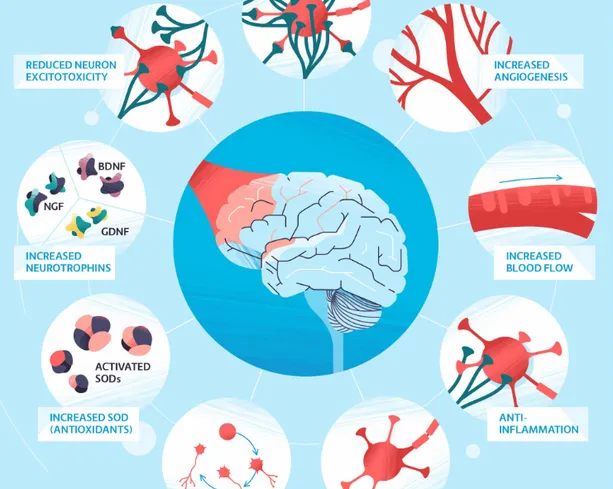
HOW DOES COLD LASER THERAPY WORK?
Cold Laser Therapy utilizes a process called photobiomodulation, where light is converted into usable cellular energy. Biological reaction to light is nothing new, as there are numerous examples of light induced photochemical reactions in biological systems. Vitamin D synthesis in our skin is an example of a photochemical reaction. Our vision is based upon light hitting our retinas and creating a chemical reaction that allows us to see. Throughout the course of evolution, photons have played a vital role in photo-chemically energizing certain cells.
In simple terms, the light penetrates the skin and enters the cells, where it is absorbed and converted into energy. Mitochondria in the cells contain chromophores which are the principal photoreceptors that absorb the light. The light energy is utilized to generate more adenosine triphosphate (ATP) for cellular use. In addition, the process creates mild oxidants (ROS), which leads to gene transcription and then to cellular repair and healing.
The process also unclogs the chain that has been clogged by nitric oxide (NO). The nitric oxide is then released back into the system. Nitric oxide is a molecule that our body produces to help its 50 trillion cells communicate with each other. This communication happens by transmission of signals throughout the entire body. Additionally, nitric oxide helps to dilate the blood vessels and improve blood circulation.
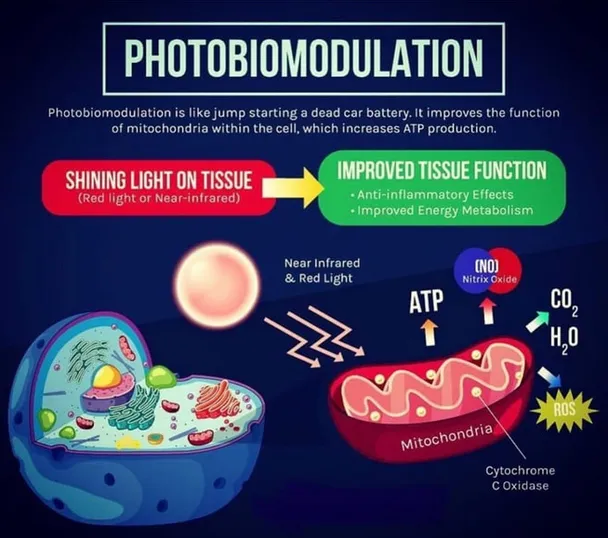
WHAT IS BRAIN PHOTOBIOMODULATION?
Brain Photobiomodulation is a light therapy that uses red to near-infrared (NIR) light to stimulate, heal, and protect tissue in the brain that has been injured or is at risk of dying. In this example of a research study conducted on the use of photobiomodulation for treating sports-related concussions, increased brain volumes, improved functional connectivity, and increased cerebral perfusion and improvements on neuropsychological test scores were observed.
The brain is the most important and complex human organ. Within every brain cell are mitochondria, which are best understood as energy-producing “powerhouses” or “batteries”. Through biochemical reactions, the mitochondria create fuel for brain cells.
Your brain’s mitochondrial performance can be improved by absorbing light energy (photons) of specific wavelengths through photobiomodulation. Scientific research shows our brain’s mitochondria respond positively to light energy within the red and near infrared (NIR) wavelength range.
Collectively, brain photobiomodulation heals damaged brain cells, improves cerebral blood circulation, reduces inflammation and toxicity, and regenerates damaged brain cells. In a nutshell, red or NIR light energy to the brain improves efficiency and performance due to better signaling and repaired connectivity between the neurons.
Research and clinical studies show that when NIR light energy has sufficient power density, it is capable of penetrating biological tissue and bone to produce therapeutic outcomes without negative side effects.
BENEFITS OF COLD LASER THERAPY
The benefits of cold laser therapy, or low-level laser therapy (LLLT), for brain injuries can be categorized into two main areas of function.
Boosting Cellular Metabolism:
Through the process of photobiomodulation, cold laser therapy can provide a significant boost to the energy efficiency and metabolism of cells. For many of our patients with neurological deficits, we can direct the cold lasers to the specific lobes of the brain or parts of the brain stem that are underfunctioning. This has been shown to increase neuronal activity and upregulate those areas of the neuraxis that have been damaged.
Reducing Inflammation:
The cascade of neuroinflammation that results from multiple head traumas is a major obstacle to healing. Cold laser therapy has been shown to reduce inflammation in the brain, as well as in the GI tract and joints.
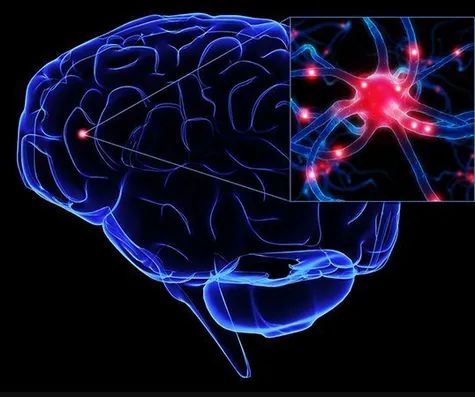
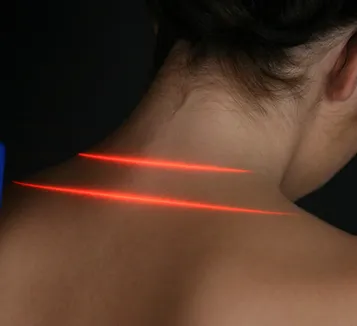
CONDITIONS THAT MAY BENEFIT FROM COLD LASER THERAPY
– Traumatic Brain Injury (TBI)
– Post Concussion Syndrome (PCS)
– Stroke
– Depression
– PTSD
– Anxiety
– Parkinson’s
– Alzheimer’s
– Other neurodegenerative disorders
– Spinal cord injury
– Edema
The literature on cold laser therapy is growing rapidly. Currently, there are over 220 published studies on cold laser therapy and brain photobiomodulation.
To become a patient at Resiliency, please fill out this contact form.